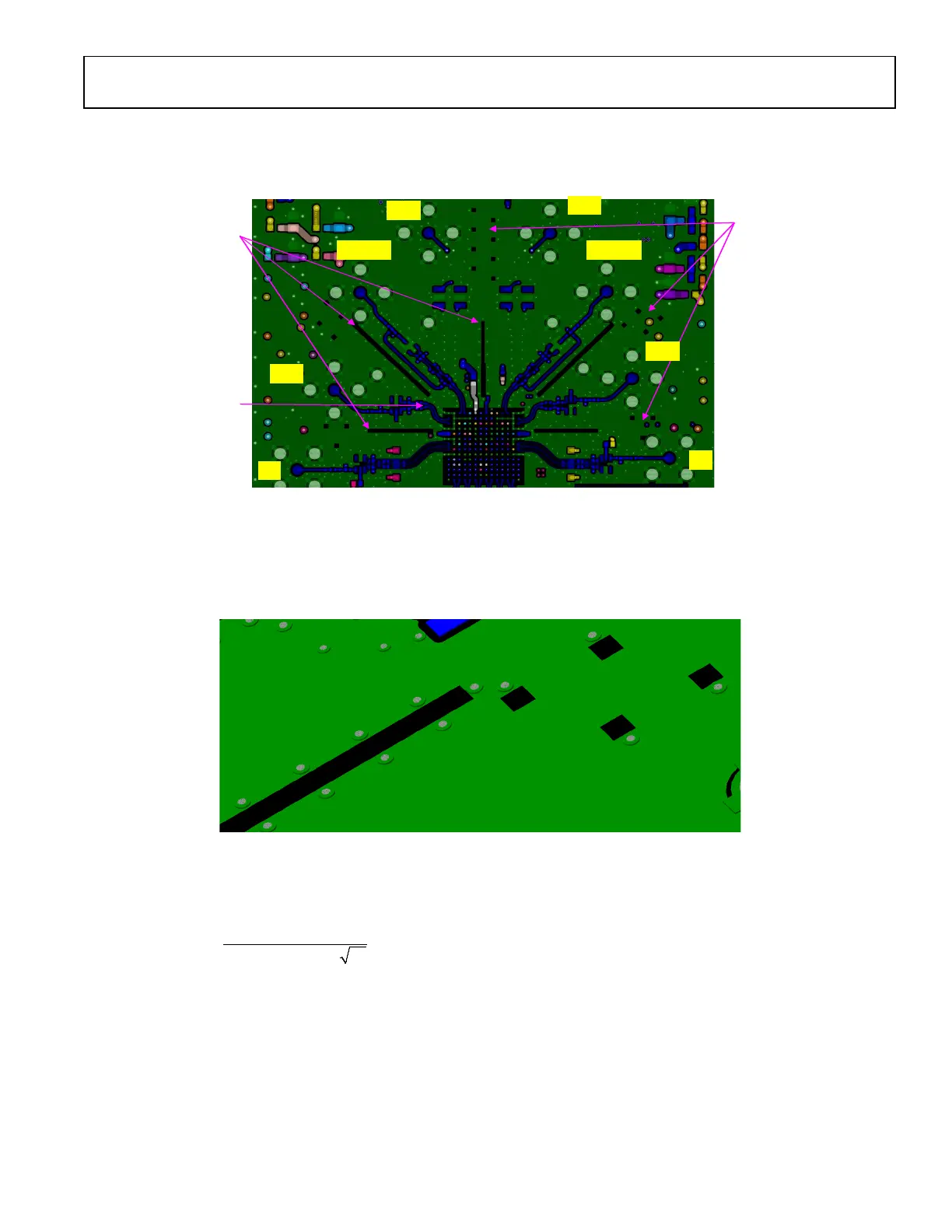Preliminary Technical Data UG-1828
Rev. PrB | Page 267 of 277
PRIMARY DEASSERT TIME
PRIMARY ASSERT TIME
PRIMARY DEASSERT TIME
PRIMARY ASSERT TIME
SECONDARY DEASSERT TIME
SECONDARY DEASSERT TIME
SECONDARY DEASSERT TIME
SECONDARY ASSERT TIME
24159-320
Figure 260. TDD Frame Timing Illustration
Note: as of v0.7.0, user should use predefined values for TDD configurations, use of custom values may cause exception.
Table 104. TDD Signals
Signal Description
RX1 Pin
TX1 Pin
RX2 Pin
TX2 Pin
These signals are hardwired to the Rx/Tx ENABLE pins (used as
SETUP signals in FH)
ORX1 Pin
ORX2 Pin
This can be used as ORX enable signal when routed to the GPIO
assigned as ORX control
RX1 DMA
RX2 DMA
TX1 DMA
TX2 DMA
ORX1 DMA
ORX2 DMA
The DMA enables that gate data transfer for each of the channels
RX1 DMA Trigger
RX2 DMA Trigger
TX1 DMA Trigger
TX2 DMA Trigger
ORX1 DMA Trigger
ORX2 DMA Trigger
These signals can be configured as triggers for the DMAs to signify
that data transfer on that channel should only occur when the
trigger signal has pulsed high followed by the DMA signal for that
channel going high.
SMA1 Trigger
Hardwired to dedicated SMA (J67) on the ZC706 board, this signal
can be used to trigger external equipment
SMA2 Trigger
Hardwired to dedicated SMA (J68) on the ZC706 board, this signal
can be used to trigger external equipment
General Purpose 1/ Hop Pin
General Purpose signal that can be routed to GPIO pins. This is also
used as the Hop Pin in FH mode.
General purpose signals that can be routed to GPIO pins as needed

